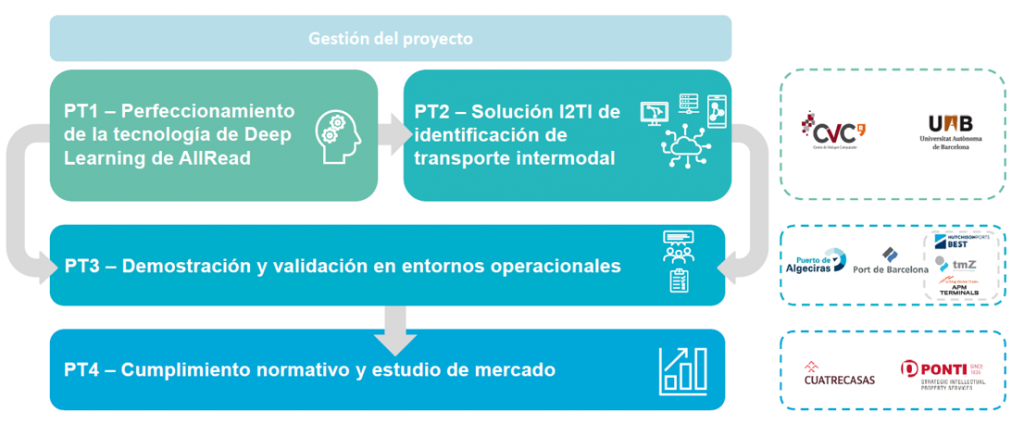Summary:
The Algeciras Bay Port Authority (APBA) actively participated in the Port OCR Disruption project, developed by the start-up AllRead MLT and focused on changing the paradigm of optical character recognition (OCR) in ports, enabling the ubiquity of traceability in port facilities by removing the financial and technological barriers to its adoption.
The project, which was financed by the Ports 4.0 Fund, had an execution period of 18 months, and was intended to develop the Intelligent Identification in Intermodal Transport (I2TI) software, a holistic “plug and play” reading solution applied to rail transport, including the reading software and the subsequent processing to obtain, in real time, the complete composition of the train: locomotive and order of containers per wagon.
Based on the unique features of the Barcelona-based start-up’s innovative patented identification technology, the solution is able to detect and read, in a single take, the relevant structured alphanumeric text or symbols from any image, and extracts all fields of interest at once, with an accuracy superior to industry benchmarks, even in highly challenging operational environments and drastically reducing hardware requirements and manual interventions (acquisition and associated operational costs).

Ultimately, AllRead I2TI provides “as a service” and “on the edge” OCR capabilities, enabling cargo assets to be effectively tracked anywhere with any ordinary CCTV camera, allowing ports to have virtually ubiquitous cargo monitoring capability across the entire site.
The core of AllRead I2TI is the Deep Learning (DL) technology developed by the company, an innovative plug & play reading software based on Artificial Intelligence, result of a 5-year research at the Computer Vision Center (CVC) of the Universitat Autònoma de Barcelona. The solution is based on an end-to-end trained convolutional neural network (CNN) architecture that can generate readouts directly without any segmentation step or localisation of the explicit text, i.e. the information is found anywhere in the image, without the need for pre-identification of where it is going to be. By skipping the above steps and automatically ignoring irrelevant textual content, AllRead I2TI produces a 100% automatic, intelligent, end-to-end, highly accurate reading system.

The scope of the project, subsidised by Puertos del Estado, included the initial development of the solution at the BEST terminal at the Port of Barcelona and, subsequently, to ensure the scalability of the solution and its compatibility with other infrastructures (hardware and information systems), the final prototype was installed, adjusted and tested in the terminals of APMT in Barcelona, TMZ in Zaragoza, and in the Port of Algeciras, with the idea of confirming not only the performance of the tool, but also its agility when being implemented in any port or logistics scenario.
The project’s innovation:
- Use of neural networks and deep learning for the automatic traceability in continuous flow of containers and wagons accessing the Port of Algeciras by rail.
- Ability to identify, in the context of an image, the location of the container codes and the associated wagon, reading and understanding the information included in it. This makes this solution different from traditional OCRs that carry out a reading of characters without taking into consideration the context in which they are found.
- Capacity for automation and integration of the information obtained with the existing digital ecosystem in the APBA.
- Solution based on a hardware-agnostic system.
The project’s product:
- Software prototype that allows processing the images captured by the existing camera system in the port and returns, in a structured way and in continuous flow, the codes of containers and wagons that access the Port of Algeciras by rail. In other words, it automatically draws up a map of the train with its cargo.




Leave a Reply